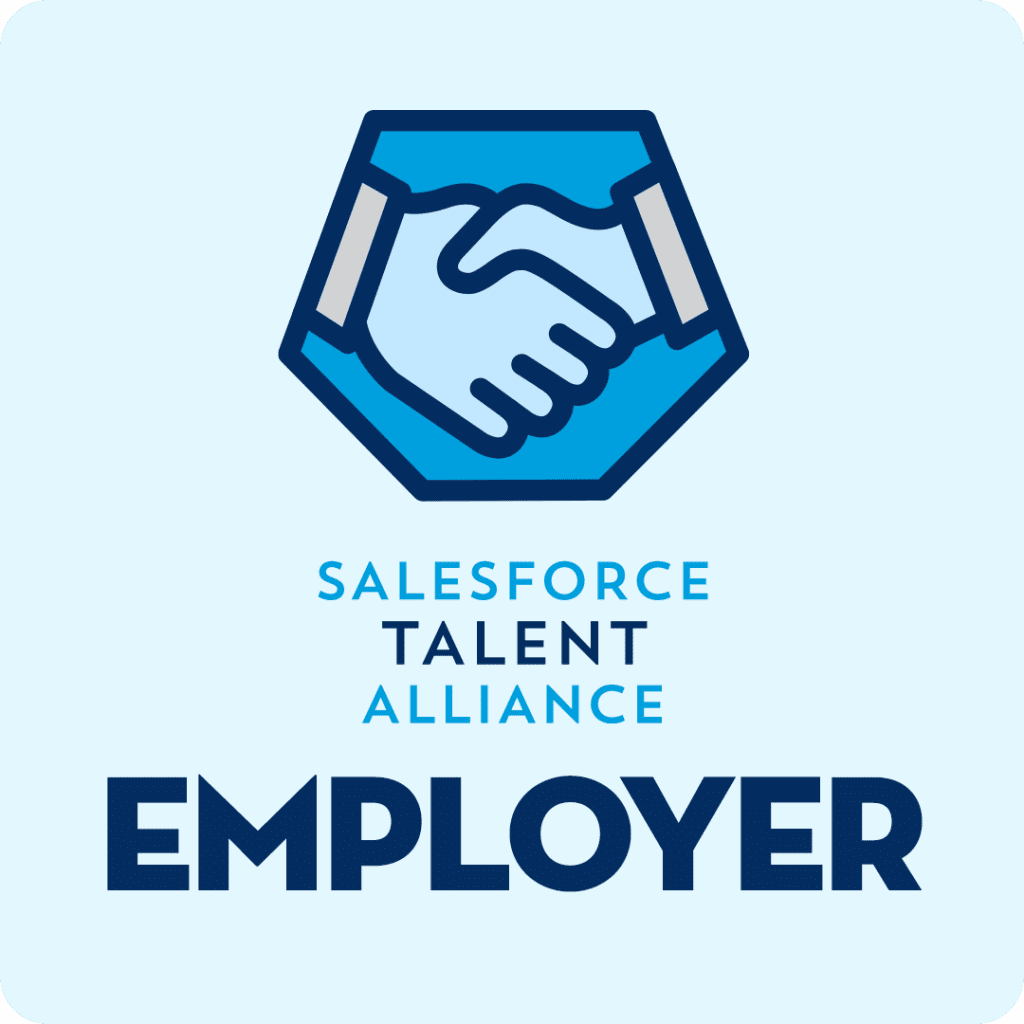Organizations of all sizes are increasingly turning to contract talent to move faster, adapt to shifting priorities, and stay competitive in rapidly evolving markets.
Whether it’s bringing in a DevOps specialist for a cloud migration, an AI engineer to prototype a new LLM product, or a team of data consultants to build dashboards that drive decision making, contractors are helping businesses deliver on all-important innovation with greater flexibility and without long-term overheads.
But managing projects that involve external freelancers isn’t as simple as handing over a task list. It demands structure, trust, and clear processes tailored to agile delivery models.
As tech recruitment experts embedded in the world’s leading tech ecosystems, we’ve helped thousands of businesses scale effectively with contractors. Based on what we’ve seen work on the ground, here are some best practices for navigating flexible talent models with success.
Explore our industry-leading Careers and Hiring Guides
1. Start with a Clear, Outcome-Driven Brief
Before you can begin working with a contractor, you both need to know what success looks like.
Unlike full-time employees, contractors are often laser-focused on delivery. It’s vital to understand that you’re likely not a freelancer’s only client—in fact, research from our industry-leading Careers and Hiring Guides found that AWS and Microsoft contractors have an average of three clients at any one time.
Vague or open-ended tasks, therefore, result in delays and frustration for both sides. In fact, a quarter (23%) of AWS, Microsoft, and Salesforce contractors across our Careers and Hiring Guides told us that clients’ unrealistic expectations are one of the biggest challenges they face as freelancers, so ensuring you’re both on the same page from the start is non-negotiable.
On the flip side, contractors who get up and running quickly are more likely to accept future engagements and recommend you to peers, boosting your reputation in the contractor market.
An outcome-driven brief creates alignment, speeds up delivery, and ensures you’re paying for progress, not guesswork—so start on the right foot with a high-quality brief that includes:
- Clear project goals: What is this work aiming to achieve, and how does it tie back to your wider business objectives?
- Detailed deliverables: Specific outputs and definitions of what the completed task looks like.
- Milestones and deadlines: Map out timelines with room for iteration and feedback cycles.
- Technical environment: Include information on your tech stack, preferred libraries, tools, and deployment process.
- Known blockers or constraints: Calling out dependencies or legacy issues up front prevents misunderstandings later, so don’t shy away from them.
2. Align on Roles, Not Just Tasks
One of the most common project bottlenecks within tech projects is blurred lines around ownership.
Contractors can bring deep expertise—but without a clear understanding of how they fit into your team structure, even top-tier talent will struggle to perform. For example, a freelance AI engineer may lead model development but rely on your internal team for business context and dataset access.
So, always map the contractor’s role onto your existing team structure and communication channels. Don’t let them float in a silo—setting these boundaries early eliminates back-and-forth later, so be sure to clarify:
- Who sets the strategy, and who owns execution?
- Are they collaborating with a product owner or working solo?
- How much autonomy do they have to make architectural or design decisions?
- Who gives feedback, and who signs off deliverables?
3. Prioritize Fast, Frictionless Onboarding
It may sound obvious, but contractors can’t deliver value if they’re locked out of your systems or waiting for access for days.
Every delay in onboarding chips away at your delivery timeline and adds unnecessary cost, so don’t fall into the common misconception that your contractor onboarding doesn’t have to be as thorough as that of a permanent hire.
Consider building a contractor onboarding pack that includes everything they need to start delivering within their first 1–2 days. Essential things to cover include:
- Access to Git repositories, testing environments, credentials, and comms platforms (Slack, Basecamp, etc.)
- Development standards (Linting, code review process, merge permissions, CI/CD workflows)
- Contextual walkthroughs of your product roadmap and where their work fits in
- Security protocols—especially if handling sensitive data, PII, or customer systems
4. Create Structured and Efficient Communication Channels
When embracing flexible talent solutions, communication isn’t a luxury—it’s an absolute necessity.
This is particularly true if your contractor is working remotely—a factor that 81% of Microsoft contractors told us was important in dictating whether they accepted an offer. Likewise, in a LinkedIn poll, 80% of AWS contractors and 82% of Salesforce contractors told us that they’d prefer to work from home than on-site.
But while tech contractors’ clear preference for remote (or, at the very least, hybrid) working indicates a clear need for strong communication between both parties, you don’t need to flood inboxes to stay aligned.
Focus on structured, efficient communication that reduces ambiguity and drives momentum. Balance is key—be present and available, but not overbearing. Micromanagement is a sure-fire way to slow your projects down, particularly if you lack technical expertise yourself.
Instead, build in checkpoints where feedback flows both ways through:
- Weekly (or daily, if necessary) standups to cover progress, blockers, and upcoming work
- Dedicated comms channels and project dashboards for daily updates
- Rapid feedback loops via pull requests, walkthroughs, or scheduled demos
It’s vital to realize just how much impact fast, responsive communication can have—in a LinkedIn poll of AWS freelancers conducted by our partner brand, Jefferson Frank, 18% listed a lack of communication as the biggest factor that would discourage them from renewing a client contract.
5. Use Milestones to Manage Accountability
One of the biggest advantages of working with contractors is the ability to define work around outcomes, not just time.
Structuring your project into clear phases or deliverables empowers you to build better clarity around expectations and protect your budget and timeline more effectively.
This grants two key benefits: first, it builds natural progress checkpoints, ensuring that projects stay on track and headed in the right direction.
Second, it enables you to identify when the project isn’t on track. Whether you need to pivot, pause, or scale, working to milestones ensures this is flagged as soon as possible and prevents more critical delays further down the line.
6. Foster Collaboration, Not Isolation
Even temporary talent should feel like part of the team. But inclusive working environments don’t just improve morale—they unlock better results.
Remember that one of the downsides of working with freelance talent is that their injection of expertise is only short-term. Once the project is over, they take their knowledge and skills with them, but by fostering a culture of collaboration, you can ensure your team benefits from your contractor’s specialism longer term.
Create opportunities for your freelancers to work with different team members and share their expertise, in order to accelerate the learning and development of full-time employees.
This starts with making sure your contractor is visible, inviting them to relevant team meetings, and publicly sharing wins and progress. Not only does this improve the on-the-job satisfaction of contractors, but it also fosters a more positive environment that drives them to produce their best work.
From there, look to foster joint problem-solving through sprint planning or reviews—this is the perfect opportunity for your team to ask questions, shadow your contractor, and really embrace all they have to offer.
7. Respect the Contracting Model
Remember that contractors are partners, not employees, so honor their boundaries and they’ll be far more motivated to go above and beyond.
Unlike employees, they may also manage multiple clients or work on alternative schedules, and misunderstandings can strain relationships and slow progress.
From unrealistic expectations to shifting deliverables, unclear project boundaries can put your contractors in a difficult position and ultimately affect the quality of your outcomes. If work begins to stretch beyond what was originally agreed, it’s important to recognize that this extra effort comes at a cost, often impacting morale and thus affecting delivery focus.
To avoid scope creep and misalignment, ensure that:
- You’re tracking deliverables and time commitments against the original brief
- Any significant change in direction is paired with a conversation around revised timelines, budgets, or expectations
- Contractors feel empowered to raise concerns early, without fear of damaging the relationship
Encouraging open, respectful dialogue around shifting needs isn’t just good conflict management—it’s good business. It ensures contractors stay engaged, fairly compensated, and focused on delivering their best work.
When asking freelance AWS professionals the key factors that would discourage them from renewing a client contract, payment delays (66%) ranked far above the rest as the top reason for reconsidering a contract renewal. A further 32% in our Careers and Hiring Guide listed late customer payment and invoicing as the biggest challenge they face as contractors.
In that same survey, 26% of AWS freelancers listed clients changing the scope of a project—a sentiment echoed by 24% of Salesforce and contractors and 19% of Microsoft contractors in their respective Careers and Hiring Guides.
It’s worth keeping in mind that word spreads fast among freelance talent within the tech community. Reliable clients get faster access to top talent through referrals and repeat engagements, so ensure you’re never falling short in critical areas like payment.
For example, here’s what one Systems Engineer told us in Jefferson Frank’s Careers and Hiring Guide: AWS Edition:
“With the ever-changing landscape of contracting, getting paid on time is one of the most crucial things. Contractors working away from home have already invested thousands in hotel costs and meals by the time an invoice is due, if the client can’t pay on time then there are plenty more who can.”
In short? The most successful projects are built on mutual respect and clarity, not assumptions or silent overreach.
8. Wrap Up with Insight and Documentation
Great contractor management doesn’t end with the final delivery.
As we’ve already mentioned, knowledge transfer is key to protecting your long-term investment and maintaining continuity if the project evolves later.
As a project comes to a close, ensure:
- All deliverables are reviewed, documented, and accessible
- Codebases include inline comments, config notes, and deployment instructions
- You hold a brief feedback session (bidirectional) to capture lessons learned
- NDA or data handover steps are completed if required
Remember that contractors who leave on a high note are more likely to rejoin future phases, or refer peers with similar skill sets, giving you a unique extra ROI from this prosperous talent delivery model.
Contractors are a powerful way to bring agility, innovation, and deep expertise into your tech projects. But their impact isn’t just about who you hire—it’s about how you manage them.
When you build the right structure, invest in onboarding, and treat contractors as collaborators, not resources, you unlock faster delivery, stronger results, and scalable success.











